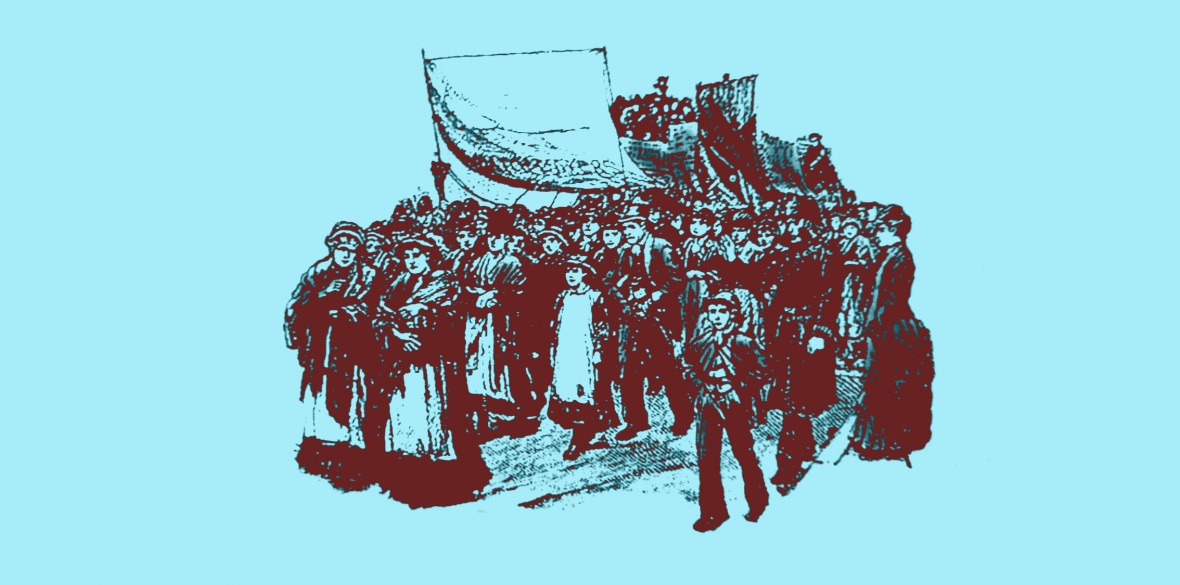This is the last article you can read this month
You can read more article this month
You can read more articles this month
Sorry your limit is up for this month
Reset on:
Please help support the Morning Star by subscribing here
WITH statues as a focus of protest since the murder of George Floyd, we have been reminded what powerful symbols they are.
In fact, removing them as sentiments change is nothing new. Pharaohs would regularly consign statues of their predecessors to the dustbins, or deserts, of history.
In the United States, on hearing the Declaration of Independence for the first time, colonists toppled a Manhattan statue of King George III — and repurposed the lead as bullets for the revolutionary war.
A British statue I’ve written a lot about is that of William Gladstone on Bow Road in east London.
And I’m now asking that we honour a group of valiant women who hated it even before they saw it.
The Bryant and May matchwomen whose wages were (illegally) stopped by their rich and well-connected bosses to pay for this grand act of sucking up to the government, were understandably angry — and even more so when they were forced to attend the unveiling, having wages stopped for the “privilege” of this compulsory time off.
The matchwomen were considered black by Victorian eugenicists, who “scientifically” categorised those of Irish descent as “negroid.”
Some matchwomen were also Jewish — I have recently been able to prove with new evidence — another hugely discriminated-against group in Victorian Britain.
What a scene it must have been in 1882 when the great and good gathered in the middle of the Bow Road, along with the women called the “lowest of the low.”
The speeches finished, the unveiling took place — and all at once the pride of the directors turned to horrified disbelief.
The women turned their triumphant PR exercise into a full-on protest. Suddenly surging towards it, they pulled their long sharp hatpins from their hats, jabbing their fingers and holding them to the stone, crying: “Our blood paid for this!”
Despite having no union and being at the bottom of the labour hierarchy, the matchwomen went on all-out strike in 1888, taking on a ruthless employer — and winning.
They formed the largest union of women and girls in the country, launching the modern trade union movement.
How appropriate to celebrate the women with a group statue of them.
And we must remember them collectively because, like the often female Black Lives Matter protesters today, they didn’t believe in leaders, just unity, sisterhood and solidarity.
Gladstone’s hands are still painted red today by those who remember, but there is no other proper memorial to these incredible women, acknowledged by Jeremy Corbyn as “mothers of our movement,” anywhere.
Please help me change that! Tower Hamlets are consulting on new historical memorials until July 12.
If you live, study or work in Tower Hamlets or are a regular visitor you can be part of this.
In just a couple of minutes you can register for an account, then go to this link, mstar.link/MatchwomenStatue, sign in, and “add pin” near the one already placed.
Let’s seize the moment and the hatpin of history to honour these great women and girls.
Dr Louise Raw is the author of Striking a Light (Bloomsbury Press) on the Bryant and May Matchwomen. Follow her campaign to build a statue to the Bow Matchwomen on Twitter @LouiseRawAuthor or www.facebook.com/MatchwomenStatueOfficial.









